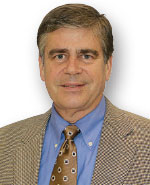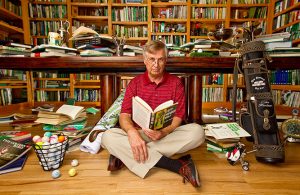An eye on golf maintenance in Egypt
 In a March 2011 column in this magazine I wrote about the Arab Spring. Feb. 11, 2011, resonated with many Egyptian students here at The Ohio State University, as well as with other international students. This past April — just slightly more than four years later — I had the opportunity to visit golf courses in Egypt and to speak in the country’s capital, Cairo.
In a March 2011 column in this magazine I wrote about the Arab Spring. Feb. 11, 2011, resonated with many Egyptian students here at The Ohio State University, as well as with other international students. This past April — just slightly more than four years later — I had the opportunity to visit golf courses in Egypt and to speak in the country’s capital, Cairo.
Before I left for Egypt, local news was reporting on unrest in the area and on an Ohio State alumnus who had been arrested and placed in prison. So with some nervousness I headed to Egypt, hoping that I would not wind up appearing on CNN.
The place where I stayed reminded me of Orlando and Disney World, with kids and families saturating the area. Like many places to which I have traveled for the first time, my expectations did not match my actual experience.
The vast majority of golf courses in Egypt were built in a 20-year period from the 1990s through 2010. Many of these golf course resorts are associated with housing developments and are of exceptional quality. However, new golf course development ceased with the Arab Spring and the turmoil that followed, a time in which tourism dropped 50 percent. Most of the golf courses built prior to 2000 feature all Tifway fairways and roughs, with Tifdwarf greens. After 2000, the courses were established with seashore paspalum. Water availability and quality are an issue around Cairo, which should be no surprise given that Egypt sits in the largest desert in the world. The quality of irrigation water varies from relatively clean effluent to water with high salt concentrations.
Safe weed control is a major agronomic problem. Weeds are an issue in both bermudagrass and seashore paspalum, but products available for control are formulated for agriculture. That is changing as safer and more effective turf-formulated and labeled products are now entering the market. The introduction of these new turf products is a hopeful sign that companies see Egypt as a viable market.
The golf courses that I visited were maintained at a level comparable to what you see here in the United States. Daily green speeds were in the range of 10.5 to 11 at the high-end courses. The superintendents with whom I spoke are predominantly Egyptian, and use Dubai golf courses as their measuring stick. Many expatriate superintendents left the country after the Arab Spring, but much of their influence remains. I asked one superintendent if he was mowing his fairways at 12 or 13 mm. He replied, “One-half inch.”
My turf seminar presentation was simultaneously translated into Arabic, but I was surprised by how many Egyptian superintendents possessed a working knowledge of English. It often is easy to communicate one-on-one. I found the Egyptian superintendents and assistant superintendents to be much like their U.S. counterparts. Their dress and mannerism are similar to superintendents in the United States, and I really enjoyed their sense of humor. They also are driven to learn as much as they can about turf. Education is highly valued.
Space considerations allow me just a few more quick observations:
- Family is extremely important and interwoven in Egyptian society. Generations live together or in very close proximity. Children will go to school and read from diaries of their relatives who fought in the Mahdist War (1881-1899) or even further back in time.
- Egyptian food is great.
- An incredible amount of construction is occurring on the outskirts of Cairo. Entire towns — I would call them cities — are being built.
- In a city of about 20 million people, Cairo appears to have one traffic light. There is no way you can drive around Cairo yourself. I asked my driver how people manage to drive, and the reply was, “By eye contact.” I’ve been a lot of places, but I have never before seen traffic like Cairo traffic.









